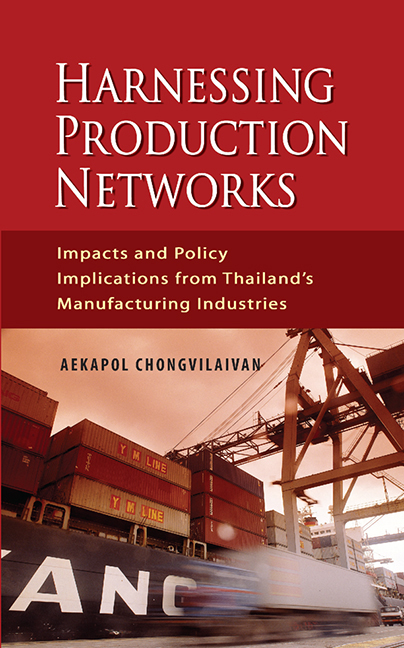 Harnessing Production Networks
Harnessing Production Networks Published online by Cambridge University Press: 21 October 2015
Introduction
Changes in productivity of a firm are perhaps the most fundamental question of the economic impacts of production fragmentation (or outsourcing). It appears to be widely accepted that outsourcing has become an increasingly imperative option for manufacturing and non-manufacturing sectors to lower their operation costs, enhance their profitability performance, and maintain their competitiveness in domestic and international markets. Görg and Hanley (2005) documented: “A recent survey involving CEOs from 440 product and service companies found that respondents who outsourced intermediates (material inputs and services), realised higher profits and revenue than those that did not.” Productivity improvements outsourcing conveys emanate from specializing in in-house production of core-competent activities, accessing technical expertise unavailable in-house, and acquiring a larger, cheaper pool of intermediate materials and services.
The purpose of this chapter is to empirically examine the impacts of outsourcing on productivity performance by employing Thailand's establishment-level data. The simple empirical exercise presented in this chapter produces the following interesting findings. Firstly, outsourcing helps boost productivity of an establishment, measured by the ratio of output to capital assets in Thailand's manufacturing industries. Secondly, the productivity gains may be attributable to the fact that establishments with higher outsourcing intensity are more likely to employ high-tech capital, such as computer machinery and equipment, intensively, thereby augmenting its productivity. Thirdly, a breakdown of the establishmentlevel dataset into two categories — one which pertains to international outsourcing and the other which contracts out the production stages purely locally — reveals that productivity gains outsourcing entails tend to be more pronounced for the former. In this sense, outsourcing locations have a say in the relationship between outsourcing and productivity improvements. Last but not least, nationality of ownership matters. The empirical evidence shows that a foreign-owned establishment reaps greater benefits in terms of higher productivity from contracting out production stages at arm's length than does a locally-owned one.
This chapter contributes to the existing research that examines the impacts of outsourcing on productivity and performance at the firm or industry levels. Much literature has been devoted to empirically examining such a linkage in industrialized economies, especially the United States (U.S.), the European Union (EU), and many newly industrialised economies (NIEs). The lack of evidence in developing countries is due largely to the absence of detailed statistics that enable one to analyse its economic consequences.
To save this book to your Kindle, first ensure no-reply@cambridge.org is added to your Approved Personal Document E-mail List under your Personal Document Settings on the Manage Your Content and Devices page of your Amazon account. Then enter the ‘name’ part of your Kindle email address below. Find out more about saving to your Kindle.
Note you can select to save to either the @free.kindle.com or @kindle.com variations. ‘@free.kindle.com’ emails are free but can only be saved to your device when it is connected to wi-fi. ‘@kindle.com’ emails can be delivered even when you are not connected to wi-fi, but note that service fees apply.
Find out more about the Kindle Personal Document Service.
To save content items to your account, please confirm that you agree to abide by our usage policies. If this is the first time you use this feature, you will be asked to authorise Cambridge Core to connect with your account. Find out more about saving content to Dropbox.
To save content items to your account, please confirm that you agree to abide by our usage policies. If this is the first time you use this feature, you will be asked to authorise Cambridge Core to connect with your account. Find out more about saving content to Google Drive.